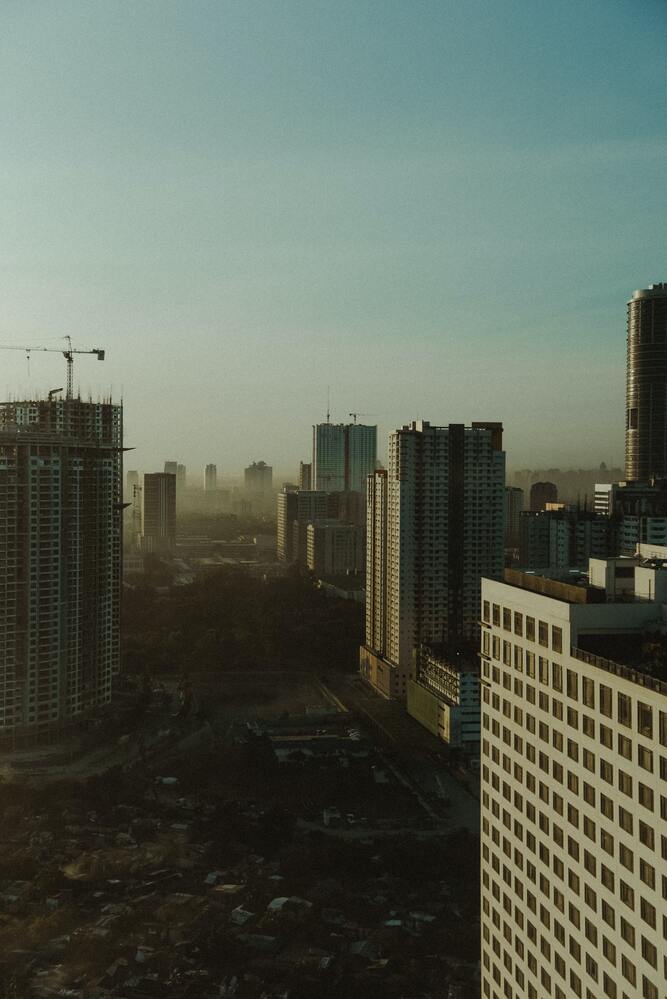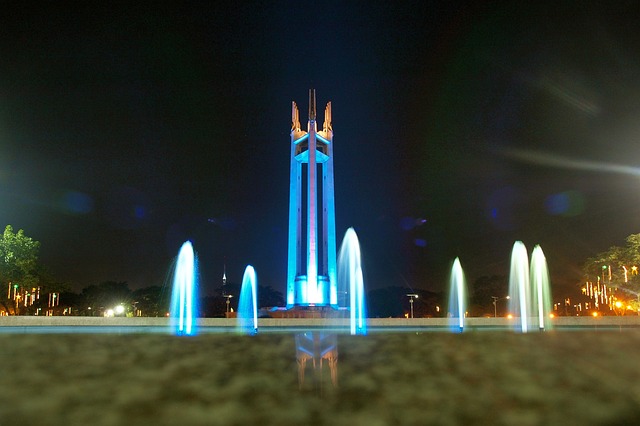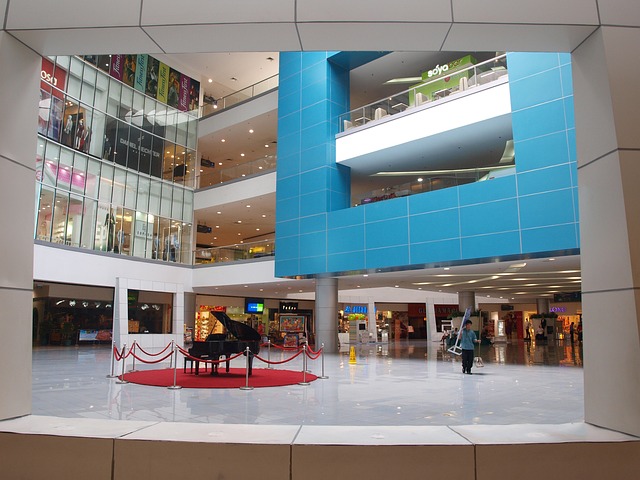Quezon Bingo Plus Register Login Portal
Please press the register/login button

to register or login.

Phone number with OTP
Facebook account authorization
Google account authorization
 The only legit online Bingo!
The only legit online Bingo!



to register or login.

Register/Login ways:
Phone number with OTP
Facebook account authorization
Google account authorization
Play 24/7 live Bingo Plus now!
 The only legit online Bingo!
The only legit online Bingo!


Quezon City
Quezon City; Filipino: Lungsod Quezon, otherwise called the City of Quezon and Q.C. (peruse in Filipino as Kyusi), is the most crowded city in the Philippines. As indicated by the 2020 statistics, it has a populace of 2,960,048 individuals. It was established on October 12, 1939, and was named for Manuel L. Quezon, the second leader of the Philippines.
The city was planned to be the public capital of the Philippines that would supplant Manila, as the last option was experiencing packing, absence of lodging, unfortunate disinfection, and gridlock. To make Quezon City, a few barrios were cut out from the towns of Caloocan, Marikina, San Juan and Pasig, notwithstanding the eight tremendous domains the Philippine government bought for this reason. It was authoritatively announced as the public capital on October 12, 1949, and a few government divisions and establishments moved out of Manila and sunk into the new capital city. This required the extension of the city northwards, cutting out Novaliches from Caloocan what separated it into two non-bordering parts. A few barrios were likewise taken from San Mateo and portions of Montalban. Nonetheless, on June 24, 1976, Official Pronouncement 940 was instituted, which returned public capital status to Manila while the entire of Metro Manila was assigned as the seat of government.
Quezon City is known for its way of life, media outlet and media, and is suitably called the "City of Stars". Significant telecom networks have their base camp and studios in the city. It is likewise known for its trade, schooling, research, innovation, legislative issues, the travel industry, workmanship and sports. A few public government branches including the Batasang Pambansa Perplexing, the seat of Place of Delegates of the Philippines, calls the city home.
Quezon City is an arranged city. It covers an all out area of 161.11 square kilometers (62.20 sq mi), making it the biggest city in Metro Manila regarding land region. It is politically partitioned into Six Legislative Regions, which addresses the city in the Lower Place of the Congress of the Philippines. The city has 142 barangays under the Regional Government. Public government divisions and organizations are generally arranged at the Public Government Community I (NGC I) in Diliman, and the Public Government Place II (NGC II) in Batasan Slopes, where the Lower Place of the Philippine Congress is found. The vast majority of the city's northern part lies at the lower regions of the Sierra Madre mountain range, including the La Plateau Watershed Reservation, the biggest watershed in Metro Manila and an assigned safeguarded region.
History
Starting designs for another capital city
Manuel L. Quezon, the second leader of the Philippines and the visionary behind the making of Quezon City is the namesake of the city. Before the making of Quezon City, the land on where it would ultimately rise was essential for a few towns, for example, Caloocan, Marikina, Pasig and San Juan, all under Manila region until 1901 and Rizal territory from 1901 to 1975.
During the 1930s, Manila's metropolitan issues were evident and hazardous. It needs open lodging, where huge number of the city's occupants live in blocked casual pilgrim networks, particularly in the focal areas of Binondo, Intramuros, Quiapo, San Nicolas and Tondo. There are likewise issues in disinfection and gridlock. The ascent of ghettos in Manila brought about the advancement of its rural areas outside as far as possible in the districts of Pasay, San Felipe Neri (renamed as Mandaluyong), San Francisco del Monte, San Pedro Macati, and San Juan del Monte. These towns became ideal for the upper and working class who needed to get away from the clogged city yet has financial connections to it.
President Manuel L. Quezon, mindful of the issue assailing Manila, started lodging projects called Barrio Obrero (Laborer's People group). These people group were laid out in different spots in Manila like Avenida Rizal, Sta. Cruz and Barrio Vitas, Tondo. Notwithstanding, the undertaking bombed pitiably and these networks became ghetto regions.
Alejandro Roces, Sr., a conspicuous Filipino creator, was supposed to be persuasive in Quezon's vision to lay out another city. Quezon longed for a city where the everyday citizens can reside and flourish. Roces recommended that a sizeable parcel of land be bought for this reason. Be that as it may, the public authority had no accessible asset with the exception of 3 million in the possession of the Public Advancement Organization (NDC).
To make Quezon's fantasy a reality and to prepare assets for the land buy, Individuals' Homesite Enterprise (PHC) was made on October 14, 1938, as an auxiliary of NDC, with an underlying capital of ₱2 million.[18] Roces was the executive of the Leading body of PHC, and they promptly procured the immense Diliman Bequest of the Tuason family at an expense of 5 centavos for each square meter. PHC led geological and region studies, and afterward partitioned the parcels and offered them to the objective purchasers at a reasonable price.[18] Its objective clients and recipients are clearly Manila's working people, who are experiencing the lack of reasonable and respectable lodging in the capital. The help of the Metropolitan Waterworks framework was reached out to site. The Department of Public Works, then, at that point, under Secretary Vicente Fragante, built the roads and expressways inside the property. Quezon likewise tapped Engineer Juan M. Arellano to draft a plan of the city.
The exchange of the College of the Philippines from Manila to Diliman was a point of reference for the making of Quezon City. Eight immense homes were obtained to make Quezon City: Diliman Bequest 1,573.22 hectares (15.7322 km2), St Nick Plateau Domain 861.79 hectares (8.6179 km2), Mandaluyong Home 781.36 hectares (7.8136 km2), Magdalena Bequest 764.48 hectares (7.6448 km2), Piedad Home 743.84 hectares (7.4384 km2), Maysilo Home 266.73 hectares (2.6673 km2) and the San Francisco Del Monte Bequest 257.54 hectares (2.5754 km2).[18] Quezon's objective to make a spot for the middle class matched with the arranged exchange of the College of the Philippines grounds in Manila to a more reasonable area, which turned into the points of reference for the production of Quezon City.
As soon as 1928, the College of the Philippines (UP) had wanted to grow by adding more scholarly units and developing new structures. The college experienced expansion in enlistment and its arranged extension was hampered by its little grounds in Manila. The changed Burnham Plan of Manila imagined the new grounds to be found right external Manila's city limits at 'the levels behind Manila'. The UP Leading group of Officials educated Quezon regarding their craving to move the grounds and he was steady of the thought. Moreover, he maintained that the offices in the Manila grounds should be utilized for government purposes. In 1939, Quezon asked the Public Gathering to establish UP's migration and on June 8, 1939, District Act 442 was passed, sanctioning the exchange of UP beyond Manila. A part of Mariquina Domain, which was contiguous Magdalena Bequest, was picked as the new site with a surmised area of 600 hectares. Extra land from the Diliman Home was likewise added as a feature of the new college grounds.
Production of Quezon City
Quezon Commemoration Circle is the point of convergence of the recently settled capital city, site of the proposed Public Legislative hall building. With the advancement of Individuals' Homesite Enterprise lodging in the Diliman Bequest and the production of the new UP Grounds, the formation of Quezon City was legitimate. On October 12, 1939, District Act No. 502, otherwise called the Sanction of Quezon City, was passed by the Public Gathering, which made Quezon City. Shockingly, Quezon permitted the bill to pass into regulation since he didn't sign it. The city was initially to be known as Balintawak City as per the main bill documented by Assemblyman Ramon P. Mitra Sr. from Mountain Territory, yet Assemblymen Narciso Ramos and Eugenio Perez, both from Pangasinan, corrected and effectively campaigned the gathering to name the city after the President out of appreciation for his part in the making of this new city. The production of Quezon City ended the full execution of the Burnham of Plan of Manila and assets were redirected for the foundation of the new capital.
A few barangays from various towns were cut on a mission to compare to the bequests that PHC purchased for the production of Quezon City. The new city has an area of 7,355 hectares (73.55 km2), and the barrios and sitios that were taken for its creation were the accompanying: Bagubantay (Bago Bantay), Balingasa, Balintauac (Balintawak), Kaingin, Kangkong, Loma (La Loma), Malamig, Matalahib, Masambong, San Isidro, San Jose, Santol and Tatalon, were taken from Caloocan;[Cubao, Diliman, Kamuning, New Manila, and San Francisco del Monte were taken from San Juan; Balara, Barranca (Barangka), Jesus de la Peña, Krus na Ligas, Tañong and the site of the new UP Grounds were taken from Marikina; and, the barrios and sitios of Libis, and Ogong (Ugong Norte) from Pasig. Republic Act No. 659, instituted on June 21, 1941, changed the urban areas limits. Under this regulation, the area of Wack Golf and Nation Club were to be returned to Mandaluyong, and the barrios of lower Barranca and Jesus de la Peña were returned to Marikina. In any case, Camp Crame was removed from San Juan and was given to Quezon City.
On 1939, in the year the city was laid out, it had a populace of 39,103 individuals. The city in its initial days was dominatingly provincial, yet Quezon asked American Engineer William Parsons to make a ground breaking strategy for the recently made city. Parsons was the person who encourage Quezon to find the Public Government Place in Diliman rather than Wallace Field (presently Rizal Park), because of the chance of maritime assault from Manila Narrows. Sadly, he passed on in December 1939 and his accomplice Harry T. Ice dominated and become the lead planner.[18] Ice showed up on the Philippines on May 1, 1940, and turned into the compositional guide of the Philippine District government. Along with Juan M. Arellano, Alpheus D. Williams, and Welton Becket, they made the All-inclusive strategy for Quezon City which was endorsed by the Philippine government in 1941. The Ice Plan highlighted wide roads, enormous open spaces and traffic circles at significant convergences. The arrangement for significant lanes made by Louis Croft for the More noteworthy Manila Region filled in as the spine for the Arrangement of Quezon City. The focal point of the city was a 400-hectare quadrangle framed by four roads — North, West, South and East — which was intended to be the area of the Public Legislature of the Philippines. At the upper east corner of the Quadrangle was a huge traffic circle, a 25-hectare curved site, were the proposed Legislative center Structure is imagined to rise.
To make the city open, Quezon requested Luzon Transport Lines to utilize from Kamuning towards Tutuban in Divisoria, Manila to give transport to the city's occupants. In any case, the admission was not reasonable to the lowest pay permitted by law workers. As a result of the city's exorbitant lodging costs and absence of transportation for low pay workers, the objective of making mass lodging for the middle class was not met. All things considered, the people who pick to reside in Quezon City were working class families, for example, in Kamuning, whose occupants requested of to rename it from Barrio Obrero (Laborer's People group) to Kamuning (a sort of tree that fills richly nearby) on the grounds that its inhabitants were not Obreros (Laborers).
Japanese occupation and The Second Great War
The Philippine Article in 1941 was hung on the recently settled Quezon City, however members were restricted to local people in light of the rising choppiness toward the start of WWII. Ultimately, portions of Manila were besieged by the Japanese Magnificent Powers in December 1941, carrying the conflict to the Philippines. On January 1, 1942, President Quezon gave Chief Request No. 400 as a crisis measure to frame the City of More prominent Manila, with Jorge B. Vargas as its assigned city hall leader. It consolidated the city with Manila and the towns of Caloocan, Makati, Mandaluyong, Parañaque, Pasay, and San Juan. The chairmen of these towns and urban communities filled in as the associate city hall leader of their separate territories and were under the chairman of More prominent Manila. The City of More prominent Manila was the reason for the arrangement of Metro Manila in 1975.
After Royal Japanese powers vanquished the Philippines during the Pacific Conflict, the City of More noteworthy Manila was revamped in 1942 into twelve regions, two of which were framed by separating Quezon City: Balintawak which comprised of San Francisco del Monte, Functions, and La Loma; and Diliman which was made out of Diliman legitimate, Cubao, and the College Area. In 1945, the City of More prominent Manila was disintegrated by President Sergio Osmeña, accordingly isolating the urban areas and towns that were combined and recapturing their pre-war status. The region which shaped the city was then represented by the Philippine Leader Commission. On that very year, consolidated Filipino and American soldiers under the US Armed force, Philippine Republic Armed force, and Philippine Constabulary, with assistance from perceived guerrilla units, freed and recovered Quezon City in a couple of months, removing Majestic Japanese powers. Weighty battling happened in Novaliches, which around then was inside Caloocan, and New Manila which had been sustained. More modest activities were battled at Barrio Talipapa and the College Region.

Post-war years (1945-1972)
Domains surrendered by Caloocan to shape Quezon City:
Existing regional limits
Confined by Republic Act 502 (1939)
Novaliches region; isolates by Republic Act 392 (1949)
On July 17, 1948, President Elpidio Quirino marked Republic Act No. 333 into regulation, making Quezon City the capital of the Philippines.[32] The Demonstration made the Capital City Arranging Commission, which was entrusted to create and carry out a masterplan for the city.[5] As the capital, the city was extended northwards, and the barrios of Baesa, Bagbag, Banlat, Kabuyao, Novaliches Legitimate (Bayan/Poblacion), Pasong Putik, Pasong Tamo, Pugad Lawin, San Bartolome, and Talipapa in Novaliches were taken from Caloocan. This regional change caused the division of Caloocan into two non-coterminous parts. Quezon City was officially introduced as the capital on October 12, 1949. President Quirino laid the foundation on the proposed State house Working at Constitution Slopes.
On June 16, 1950, the Quezon City Sanction was amended by Republic Act No. 537, changing the city's limits to an area of 153.59 km2 (59 sq mi). Precisely six years after on June 16, 1956, more modifications to the city's domain were made by Republic Act No. 1575, which characterized its region as 151.06 km2 (58 sq mi). In any case, as per the 1995 GIS graphical plot, the city's complete region is 161.11 km2 (62.20 sq mi), making it the biggest Neighborhood Government Unit in Metro Manila concerning land region.
The military regulation time (1972-1986) During the organization of Ferdinand Marcos, the area of Metro Manila was made as an incorporated unit with the institution of Official Pronouncement No. 824 on November 7, 1975. The locale incorporated four urban communities and thirteen bordering towns, as a different provincial unit of government.> A year after the fact, on June 24, 1976, Manila was reestablished by President Marcos as the capital of the Philippines for its verifiable importance as the seat of government since the Spanish Time frame. Official Pronouncement No. 940 states that Manila has forever been to the Filipino public and according to the world, the chief city of the Philippines being the focal point of exchange, trade, instruction and culture. Simultaneous with the reestablishment of Manila as the capital, Ferdinand Marcos assigned his better half, Imelda Marcos, as the primary legislative head of Metro Manila, who began the development of monstrous government buildings with design importance as she re-marked Manila as the "City of Man".
On Walk 31, 1978, President Marcos requested the exchange of the remaining parts of President Quezon from Manila North Graveyard to the recently finished Quezon Remembrance Altar. It currently houses the sepulcher where President Quezon and his significant other Aurora Aragon Quezon are buried. It likewise contains an exhibition hall devoted to President Quezon and his life.
Quezon City turned into the setting of a ton of opposition movement against the Marcos tyranny, as youth and understudy demonstrators more than once conflicted with the police and military which were compliant to the Marcos system. The Diliman Community was the first of such uprising against the public authority, as the understudy, employees and occupants of UP Diliman fought the three centavos expansion in oil costs. It was trailed by the Primary Quarter Tempest, a time of common turmoil generally coordinated by understudies. During the military regulation period, a progression of exhibits, fights, and walks against the organization of President Ferdinand Marcos occurred at different areas in the city.
The Bantayog ng mga Bayani was devoted to pay tribute to the every one individuals that battled during the Marcos system. Among the noticeable instances of misuse endured explicitly by Quezon City occupants were the instances of Primitivo Mijares and his child Boyet Mijares, who lived in Undertaking 6 at the hour of their demises.
On 1986, the peaceful Individuals Power Upset, drove by Corazon Aquino and Cardinal Jaime Sin, happened that removed the Marcos from power. Great many individuals rushed EDSA between Camp Crame and Camp Aguinaldo in a progression of well known exhibits and common obstruction against the Marcos government that happened between February 22-25, 1986.
Every one of the three significant landmarks honoring the Military Regulation period are situated in Quezon City. Individuals Power Landmark and the EDSA Place of worship were underlying the city to honor the occasion, with the last option being an image of the job that the Catholic Church played in the rebuilding of a majority rules government in the Philippines. The Bantayog ng mga Bayani was developed along Quezon Road to respect the legends and saints that battled under the 20-year the Marcos system. The Mass of Recognition at the Bantayog praises noticeable figures during the military regulation time.

currently available (1986–ngayon)
Shrine at EDSA Republic Act was passed on February 23, 1998. President Fidel Ramos signed Executive Order No. 8535, dividing the 15 northernmost barangays of Quezon City to create the City of Novaliches. The impacted barangays are the only ones voting, despite Ismael "Mel" Mathay Jr.'s efforts to include the entire city. Additionally, he ran an anti-Novaliches separatist campaign. The secession of Novaliches was rejected by a resounding majority of Quezon City citizens in the subsequent plebiscite, which was held on October 23, 1999. Feliciano Belmonte Jr. followed Mathay as mayor of the city from 2001 until 2010.
Herbert "Bistek" Bautista was chosen as the city mayor in the 2010 municipal elections. The Quezon City Pride Council was founded during his administration. It was the country's first LGBT council. He also started a number of "Bistekville" social housing projects. In 2019, Maria Josefina "Joy" Belmonte, the vice mayor during Bautista's term and the granddaughter of former Quezon City mayor Feliciano Belmonte Jr., succeeded him.
The Quezon City People's Council was then created after she was re-elected as city mayor in 2022. According to the Participation, Accountability and Transparency Ordinance, the council will represent the 2,232 civil society organizations that have been authorized by the city government under one roof in order to increase civic engagement and to act as the "eyes, ears, and voice" of the city's citizens within the municipal government.
Due to the ongoing COVID-19 pandemic throughout the nation, a community quarantine has been in effect in Quezon City since March 15, 2020. The city was placed under the strictest quarantine from March 17, 2020, to May 31, 2020, in response to the pandemic that is still raging there and has killed more than 1,200 people.
No-contact policy for arrests See also: No Contact Policy for Apprehension The No Contact Apprehension Policy was fully implemented on numerous important city highways by the Quezon City government on July 1, 2022. As a result, E. Rodriguez Sr. placed closed-circuit television cameras at a few Quirino Highway crossings. West Avenue, East Avenue, Kamias Road, Avenue, Aurora Boulevard, and P. Boulevard Tuazon.
A notice of violation would be mailed to drivers who disobey traffic laws. Residents of the city should receive this notice of violation within 14 days, but non-residents should expect to receive their notices after the standard 14-day period. A dedicated website allows users to examine any traffic infractions that have been recorded in the system and pay fines online.
The strategy has drawn criticism from drivers, though, as a number of crossroads lack clear instructions on how to cross the street safely. Several drivers in particular expressed their frustration on social media after receiving citations for turning "in the wrong lane" at the junction of E. Senior Rodriguez Where Avenue and Gilmore Avenue meet, Quezon City's bike lane network divides the rightmost lane in half.

Quezon City ay ang pinakamalaking lungsod sa Metro Manila, Pilipinas. Ito ay naging opisyal na lungsod noong 1948 at ngayon ay tinatawag na "City of Stars" dahil sa dami ng mga sikat na artista at personalidad na nagmula dito. Quezon City ay mayroong maraming mga parke, mga pasyalan, mga sentro ng kultura, at mga shopping mall na nagbibigay ng maraming pagpipilian sa mga turista at mga residente para sa kanilang leisure time.
Ang Quezon Memorial Circle ay isa sa mga pinakakilalang lugar sa lungsod. Ito ay nag-ehenblya ng isang obelisk na tumatandang sa sentro ng parke na ito. Sa taas ng obelisk ay mayroong isang museum na nagpapakilala sa buhay at paglilingkod ni Pangulong Manuel L. Quezon. Ang parke ay madalas na ginagamit para sa mga aktibidad sa labas, gaya ng picnic, paglalakad, at pag-exercise.
Ang Araneta Center ay isa sa mga pinakamalaking shopping mall sa Pilipinas. Ito ay mayroong maraming mga tindahan, restawran, at sinehan na nagbibigay ng maraming pagpipilian sa mga turista at mga residente. Sa Araneta Center din matatagpuan ang Smart Araneta Coliseum, isa sa mga pinakamalaking indoor arena sa mundo. Ito ay naging tahanan ng iba't ibang mga palabas, konsyerto, at sports event.
Sa Quezon City din matatagpuan ang mga museo gaya ng Ayala Museum at ang National Museum of the Philippines. Ang mga museo na ito ay nag-e-exhibit ng mga artefact, painting, at ibang bagay na nagpapakilala sa kultura at kasaysayan ng Pilipinas.
Sa ilalim ng Quezon City din matatagpuan ang mga pagkain na district gaya ng Maginhawa Street. Ang lugar na ito ay nag-o-offer ng iba't ibang uri ng pagkain mula sa Pilipinas at iba pang bansa.
Sa lahat, Quezon City ay isang mahalagang destinasyon sa Metro Manila dahil sa maraming mga pagpipilian na ibinibigay nito sa mga turista at mga residente. Ang lungsod ay puno ng kultura, pagkain, shopping, at mga aktibidad na maaaring gawin sa labas.
Bingo Plus Rewards

